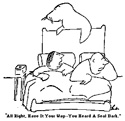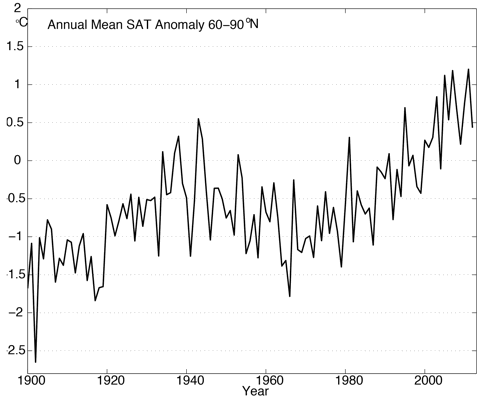 I promised an open thread, so here’s one to hold all your latest thoughts and wisdom. What’s it to be? Wind power, silly “solar models” built on notch filters and fudge factors, or the abysmal climate politics afflicting our friends across the Tasman? You decide. I only ask that you abide by the comment policy and stay roughly on the climate beat.
I promised an open thread, so here’s one to hold all your latest thoughts and wisdom. What’s it to be? Wind power, silly “solar models” built on notch filters and fudge factors, or the abysmal climate politics afflicting our friends across the Tasman? You decide. I only ask that you abide by the comment policy and stay roughly on the climate beat.
Category: Climate science
In vino, climate veritas: Salinger on warming and the new world of wine
 Wine grapes are a climatically sensitive crop grown across a fairly narrow geographic range. Growing season temperatures for high-quality wine production is generally limited to 13–21°C on the average. This currently encompasses the Old World appellation regions of France, Italy, Germany, Spain and the Balkans, and those developing New World regions in California, Chile, Argentina, southern Australia and New Zealand.
Wine grapes are a climatically sensitive crop grown across a fairly narrow geographic range. Growing season temperatures for high-quality wine production is generally limited to 13–21°C on the average. This currently encompasses the Old World appellation regions of France, Italy, Germany, Spain and the Balkans, and those developing New World regions in California, Chile, Argentina, southern Australia and New Zealand.
Speaking at the International Masters of Wine Symposium last month in Florence in Italy, professor Greg Jones, the wine climate specialist from the University of Southern Oregon, noted that the overall growing season temperature trend was upwards. This is for numerous wine regions across the globe from 1950–2000, by 1.3°C. Greater growing season heat accumulation with warmer and longer seasons has occurred. At the same time frost days (days below 0°C) have decreased from 40 to around 12 per year at Blenheim.
There has been a decline in the number of days of frost that is most significant in the dormant period and spring, earlier last spring frosts, later first frosts in autumn with longer frost-free periods. For example in Tuscany, the Chianti region of Italy, summer temperatures have increased by 2°C from 1955-2004. The warming is extending the world’s wine map into new areas such as British Columbia in Canada, Exmoor in England and into the southern Baltic.
Continue reading “In vino, climate veritas: Salinger on warming and the new world of wine”
TDB Today: You ain’t seen nothing yet
 Last week was something of a trial: bits of my little farm were being washed out to sea, tracks were eroding, and our road was closed by slips and rockfalls. Just another in a sequence of extreme weather events that have got the locals in North Canterbury wondering about the weird weather being inflicted on them. In my Daily Blog post this week — You Ain’t Seen Nothing Yet — I note that worse is on the way, and there’s little we can do beyond battening down the hatches.
Last week was something of a trial: bits of my little farm were being washed out to sea, tracks were eroding, and our road was closed by slips and rockfalls. Just another in a sequence of extreme weather events that have got the locals in North Canterbury wondering about the weird weather being inflicted on them. In my Daily Blog post this week — You Ain’t Seen Nothing Yet — I note that worse is on the way, and there’s little we can do beyond battening down the hatches.
The Sixth Extinction
 Elizabeth Kolbert’s recent book The Sixth Extinction: An Unnatural History is science journalism of a high order. As with her earlier notable book on climate change, Field Notes from a Catastrophe, she includes lively narrative accounts of her visits to places around the world where scientists are at work and communicates the import of their work with clarity and intelligence. Well-informed background discussions on the general topic of extinction are woven into these narratives, in passages well pitched to the understanding of the general reader. Foreboding though the subject may be the book is a pleasure to read.
Elizabeth Kolbert’s recent book The Sixth Extinction: An Unnatural History is science journalism of a high order. As with her earlier notable book on climate change, Field Notes from a Catastrophe, she includes lively narrative accounts of her visits to places around the world where scientists are at work and communicates the import of their work with clarity and intelligence. Well-informed background discussions on the general topic of extinction are woven into these narratives, in passages well pitched to the understanding of the general reader. Foreboding though the subject may be the book is a pleasure to read.
The phenomenon of species extinction has only begun to be understood in relatively recent times. Kolbert traces the discussions of the 19th century from the ground-breaking conclusion of Cuvier to the doubting Lyell and finally Darwin, whose theory of evolution necessarily involved the disappearance as well as the emergence of species.
In evolutionary terms the mass extinctions of the distant past are a special case, arising from relatively sudden events for which natural selection over long periods of time had not prepared many of the species which disappeared under the stress of a rapidly changed environment. Kolbert comments on the fact that just as we have recovered the story of these past events and identified five of them we have discovered that we are causing another. Whether it will reach the proportions of the Big Five is not yet known, but the indications are significant enough for it to be called the Sixth Extinction. She notes the estimation that one-third of all reef-building corals, a third of all freshwater mollusks, a third of sharks and rays, a quarter of all mammals, a fifth of all reptiles , and a sixth of all birds are headed toward oblivion. It’s no small matter.
The dishonesty of de Lange and Carter: zombie lies under Greenland ice
 According to Waikato University’s Willem de Lange and freelance climate denier Bob Carter, the whole Arctic is cooling strongly. When Bill and Bob plagiarised their own work for the Heartland-funded and published Non-governmental International Panel on Climate Change (NIPCC) second report, they were not just copying their own words, but also plagiarising earlier efforts by the NIPCC and Craig Idso’s Centre for the Study of CO2 and Global Change. In fact, a 2007 misrepresentation by Idso of a 2004 paper about temperatures up to the 1990s in a single Greenland fjord has been handed down through seven years, successive “authors” and NIPCC reports until it has become an unbelievable lie that de Lange and Carter are happy to repeat for a new audience.
According to Waikato University’s Willem de Lange and freelance climate denier Bob Carter, the whole Arctic is cooling strongly. When Bill and Bob plagiarised their own work for the Heartland-funded and published Non-governmental International Panel on Climate Change (NIPCC) second report, they were not just copying their own words, but also plagiarising earlier efforts by the NIPCC and Craig Idso’s Centre for the Study of CO2 and Global Change. In fact, a 2007 misrepresentation by Idso of a 2004 paper about temperatures up to the 1990s in a single Greenland fjord has been handed down through seven years, successive “authors” and NIPCC reports until it has become an unbelievable lie that de Lange and Carter are happy to repeat for a new audience.
When I was doing the research for my article on de Lange and Carter’s sea level rise report for Nigel Lawson’s Global Warming Policy Foundation, I was forced to dig around inside the chapter they had written for most recent NIPCC report — the second of its ilk (NIPCC2, Chapter 6). What jumped out at me was this paragraph, from the conclusions to section 6.2.1.10.1 on page 792:
Regarding the Northern Hemisphere, the Arctic regions have been cooling for the past half-century, and at a very significant rate, making it unlikely Greenland’s frozen water will be released to the world’s oceans anytime soon. This temperature trend is just the opposite — and strikingly so — of that claimed for the Northern Hemisphere and the world by the IPCC. Accompanying the cooling, the annual number of snowfall days over parts of Greenland has also increased strongly, so an enhanced accumulation of snow there may be compensating for the extra runoff coming from mountain glaciers that have been receding.
That’s right. Carter and de Lange are happy to put their names to a statement that the Arctic has been cooling for the last 50 years. Everybody else thinks that the Arctic has been warming strongly for the last 30 years, as this graph of Arctic surface air temperatures shows:
Source: NOAA’s annual Arctic Report Card, 2013 update.
So how on earth do they justify a claim that the Arctic has been cooling “at a very significant rate”? The answer’s simple. They don’t. There is no supporting reference given for that statement. It is offered as a conclusion without a hint of a reason supplied in the text above it, or in the references below it. But Bill and Bob didn’t just make it up, they stayed true to form and copied it word for word from somewhere else.
Continue reading “The dishonesty of de Lange and Carter: zombie lies under Greenland ice”

